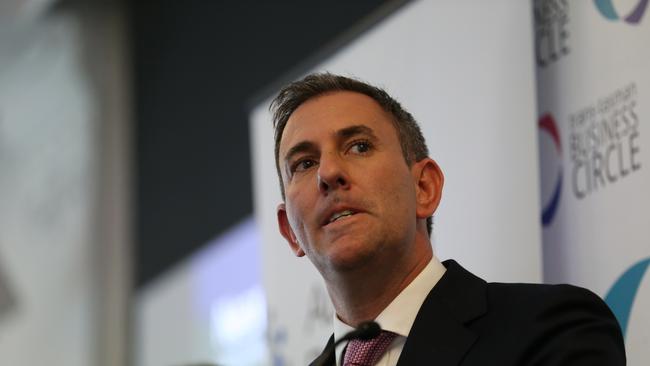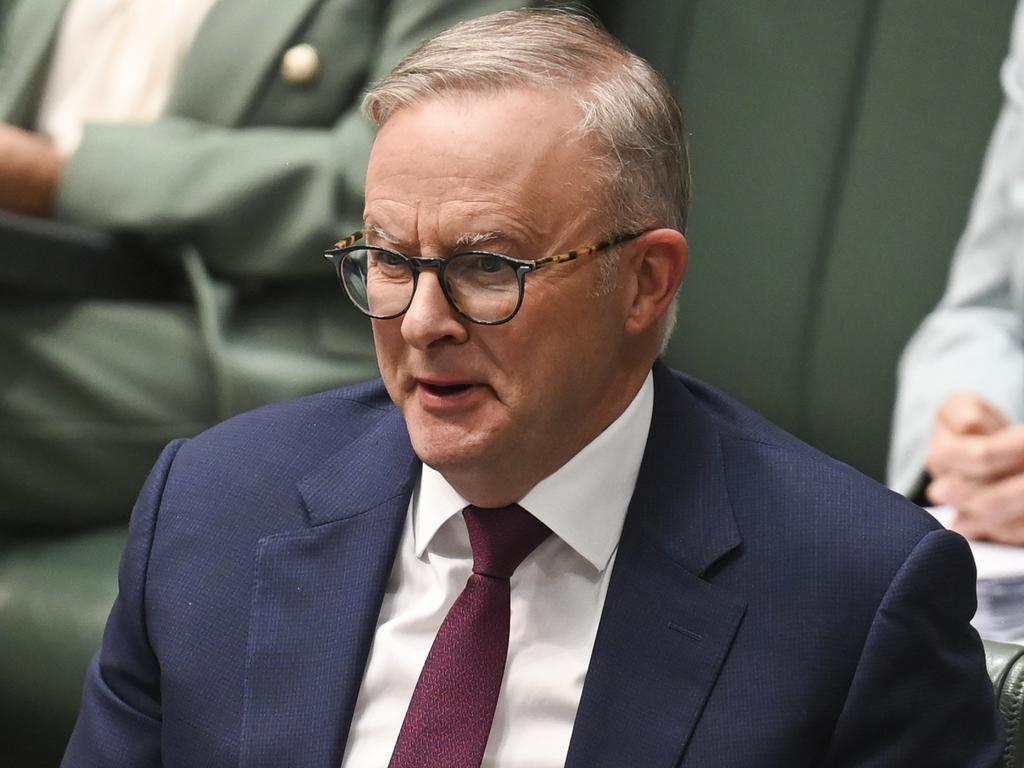‘Every taxpayer wins’: PM hails stage three victory
Economists back in calls from big business to reinstate more budget discipline via a cap on tax revenue as a share of the economy.

Anthony Albanese has hailed the passage of his controversial stage three tax cuts as a win for “every single taxpayer” voting in Saturday’s Dunkley by-election.
The Labor tax package sailed through the upper house on Tuesday night with bipartisan support, hours after the Prime Minister conceded there were still Australians who didn’t know about the tax cuts.
The quick passage of the bill means the cuts will start applying to people’s incomes from July 1, as the government planned, and will be seized on by Labor ahead of the crucial by-election.
Labor’s tax cuts win came as independent economist Chris Richardson blasted the government’s “very weak” budget rules, backing calls from the Business Council of Australia to increase fiscal discipline through a cap on tax revenue as a share of the economy.
After the stage three legislation passed, the Prime Minister pivoted straight to the by-election on Saturday.
“This is a huge win for all 13.6 million Australian taxpayers. It means 84 per cent of Australians will get a bigger tax cut than they would have under the Liberals’ plan,” Mr Albanese said at Parliament House.
“Under Labor, Australians are earning more and they get to keep more of what they earn. These tax cuts are aimed squarely at Middle Australia …
“We hope to get a good result in the Dunkley by-election, and everyone in Dunkley will know that we wanted every single taxpayer in Dunkley to get a tax cut.”
Under Labor’s revamped stage three tax cuts, workers with taxable income under $146,486 will receive a larger tax cut than under the plan legislated by the Morrison government, while those over the threshold will see their tax cut reduced.
Labor’s plan reduces the lowest tax rate from 19c to 16c in the dollar for incomes from $18,200 to $45,000, while it reinstates a 37c tax rate on incomes from $135,000 to $190,000. The top tax rate of 45c will now kick in at $190,000, rather than the Coalition’s $200,000 threshold
As Mr Albanese celebrated the passage of his bill, debate over the government’s handling of spending heated up.
Dr Chalmers has targeted restraining growth in spending, but has provided no hard targets that guide the budget through different economic cycles.
Mr Richardson said the budget strategy lacked rigour.
“They absolutely need better rules,” he said.
The 23.9 per cent tax-to-GDP cap under the former Coalition government was arbitrary, he agreed, but there was a value to having an “anchor” to help guide the budget and promote fiscal discipline.
The BCA in its pre-budget submission on Tuesday said: “A cap on the tax-to-GDP ratio effectively hands back bracket creep, disciplines governments and stops spending increasing more rapidly than economic growth.
“Some have argued the tax cap is unrealistic in the context of increasing spending pressures. But in the absence of broader tax reform, allowing bracket creep to continue unabated is both politically and economically unrealistic and damaging,” the BCA submission said.
With Australia now more expensive to run, thanks to rapidly rising social security expenses and defence spending, Mr Richardson said the 23.9 per cent rate most likely would need to be higher.
“Australia’s revenues roar up and down as a result of commodity prices, so you may be better with an expenditure rule rather than a revenue one,” he said.
With a tiny $1.1bn deficit forecast for 2023-24, Dr Chalmers has said a second straight surplus is “within striking distance”, particularly given the rolling revenue upgrades revealed in the commonwealth’s monthly financial statements.
Still, Treasury continues to project an ongoing mismatch between revenue and spending, and projects a structural deficit that lasts beyond this decade.
December’s mid-year budget update estimated government expenses as a share of GDP would be 25.8 per cent in this financial year, before climbing above 26 per cent in 2024-25 and through the forward estimates period.
The Australian Chamber of Commerce and Industry, in its pre-budget submission, urged Labor to “rein in government spending and maintain it at manageable levels below 25 per cent of GDP going forward”.
KPMG chief economist Brendan Rynne said that while a tax-to-GDP cap would provide a useful benchmark, the real challenge was containing runaway spending.







To join the conversation, please log in. Don't have an account? Register
Join the conversation, you are commenting as Logout